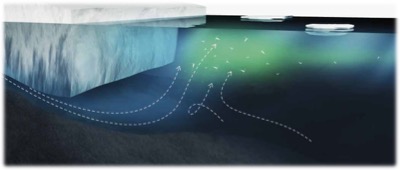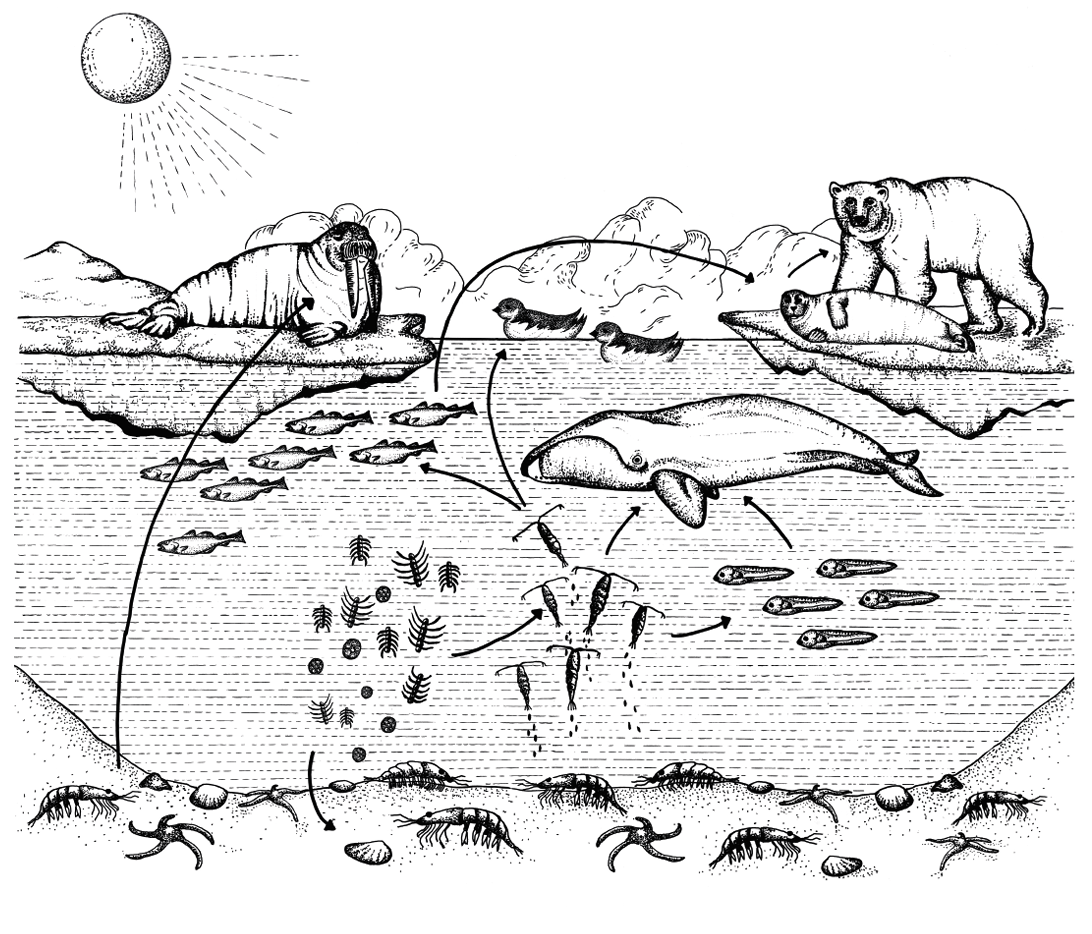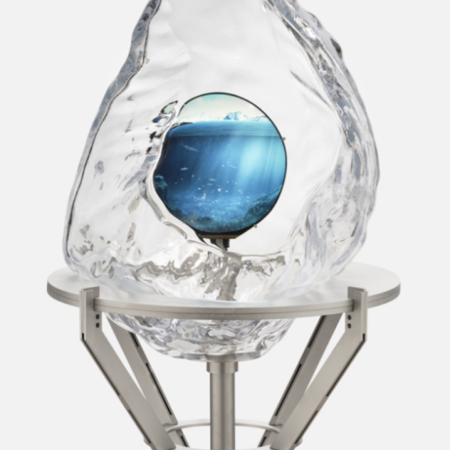THE SPRING BLOOM
- The nutritious Icefjord
- The importance of the sea ice for the spring bloom
- The spring bloom
You solve the tasks by using
- Text
- Audio
- Drawing tools
- Pictures
This part is based on pp. 8-15 – there you will find information about the subject.
Read about climate changes in Greenland.
When spring and summer come, the light from the sun causes the production of phytoplankton to increase. The ice algae which have been caught in the ice all winter, start to bloom.

Smeltevandet fra gletsjeren løber ud i fjorden og hvirvler det næringsrige bundvand op i lyset.
Vandlopperne der har overvintret på bunden af havet, vandrer op og æder sig fede i den næringsrige plankton.
Why are there most nutrients and plankton near the glacier front?
Why is the fresh water from the glacier lighter than the salt water from the Icefjord?
Why does the production of phytoplankton increase in spring and summer?
Here you see a marine food web. A food web is a model showing the mutual feeding relations between animals in a certain ecosystem.

A food web always contains an organism that can conduct photosynthesis, a plant that uses the energy from sunlight to produce nourishment.
Why is it important that the copepods eat themselves fat?
Which organism in this food web can conduct photosynthesis?
Who eats whom? And why do some not get eaten?
The copepods having spent the winter at the bottom of the sea, rise up towards the surface to eat themselves fat in phytoplankton. If the ice breaks earlier than usual or there is no ice at all, the bloom of phytoplankton will occur too early.

This means that the copepods will rise too late and not get enough food during the bloom. This may have disastrous consequences for the entire food web.
What could be the causes of the ice breaking too early or being completely missing?
How does it affect the marine food web if the bloom occurs too early?
When the copepods rise towards the surface, will they be close to or far from the glacier front?
When spring and summer come, the light from the sun causes the production of phytoplankton to increase. The ice algae which have been caught in the ice all winter, start to bloom.

Smeltevandet fra gletsjeren løber ud i fjorden og hvirvler det næringsrige bundvand op i lyset.
Vandlopperne der har overvintret på bunden af havet, vandrer op og æder sig fede i den næringsrige plankton.
Why are there most nutrients and plankton near the glacier front?
Why is the fresh water from the glacier lighter than the salt water from the Icefjord?
Why does the production of phytoplankton increase in spring and summer?
Here you see a marine food web. A food web is a model showing the mutual feeding relations between animals in a certain ecosystem.

A food web always contains an organism that can conduct photosynthesis, a plant that uses the energy from sunlight to produce nourishment.
Why is it important that the copepods eat themselves fat?
Which organism in this food web can conduct photosynthesis?
Who eats whom? And why do some not get eaten?
The copepods having spent the winter at the bottom of the sea, rise up towards the surface to eat themselves fat in phytoplankton. If the ice breaks earlier than usual or there is no ice at all, the bloom of phytoplankton will occur too early.

This means that the copepods will rise too late and not get enough food during the bloom. This may have disastrous consequences for the entire food web.
What could be the causes of the ice breaking too early or being completely missing?
How does it affect the marine food web if the bloom occurs too early?
When the copepods rise towards the surface, will they be close to or far from the glacier front?




